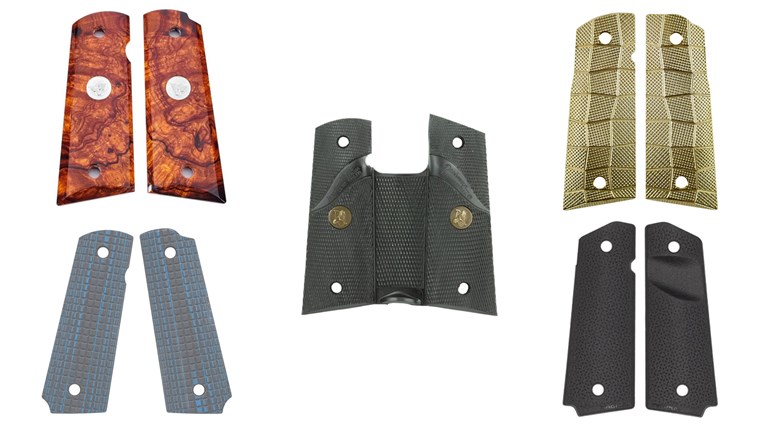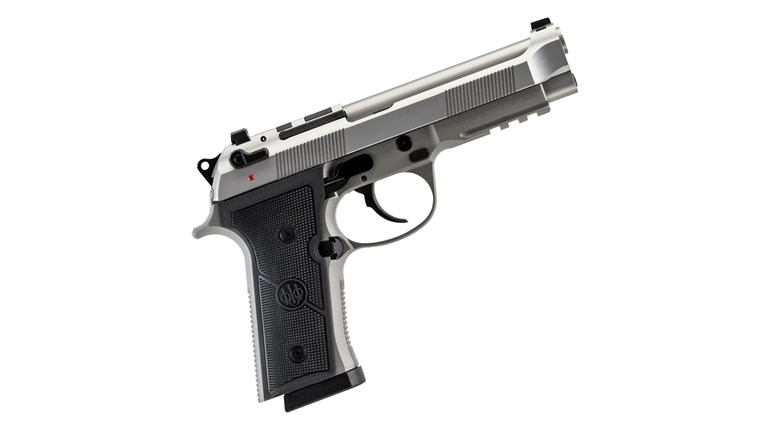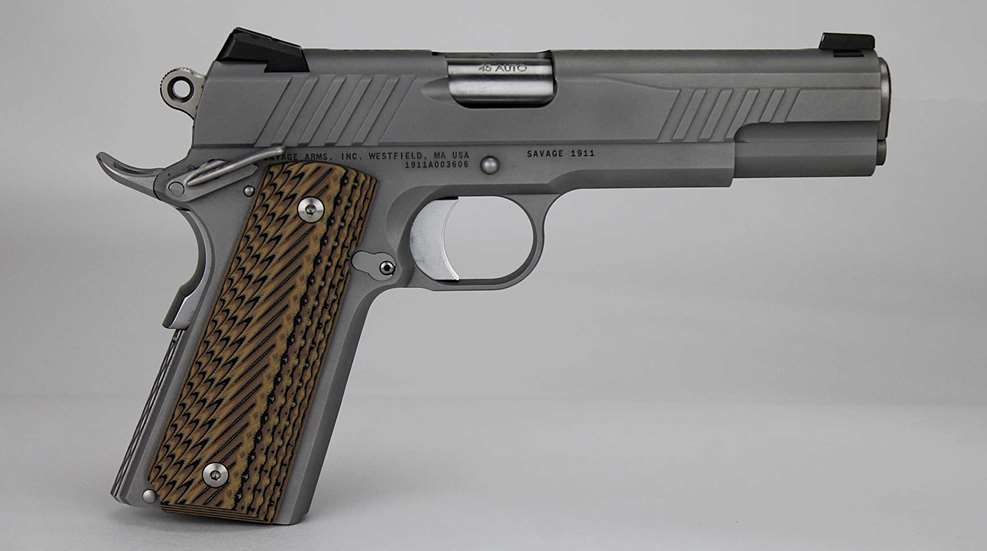
Some years back while riding a SHOT Show bus from Las Vegas, Nevada, to Media Day at the Range in adjacent Boulder City, I sat next to a representative from a major firearms manufacturer. During our chat en route to the shooting range, he mentioned that his company would begin making AR-15 rifles.
“Oh. Why?” I asked him. “Because everyone else is,” he responded with a shrug.
The same might be said for polymer-frame 9 mm pistols, which have become the firearms equivalent of rows of subdivision cookie-cutter houses that look all the same. Since they sell well, companies are manufacturing or importing “plastic 9s” to keep up with their competitive Joneses for a slice of the 9 mm pie. That’s not meant as a denigration—nearly all of them are quality pistols, well-designed, well made, adequately accurate and, perhaps most important in a combat pistol—reliable.
BIG BORES AND HOT RODS
There is no lack of Model 1911 pistols, either. The Model 1911 debuted more than a century ago as a rugged, reliable and utilitarian combat pistol firing an equally new big-bore .45 ACP cartridge, unmatched even today among military pistol cartridges for its stopping power. Both pistol and cartridge have a long and inarguable history of proving themselves in military, paramilitary and selfdefense applications. Yet, just as backyard mechanics learned to turn sedate sedans into tire-smoking hot rods, gunsmiths and tinkerers developed improvements to the Model 1911 in accuracy and ergonomics.
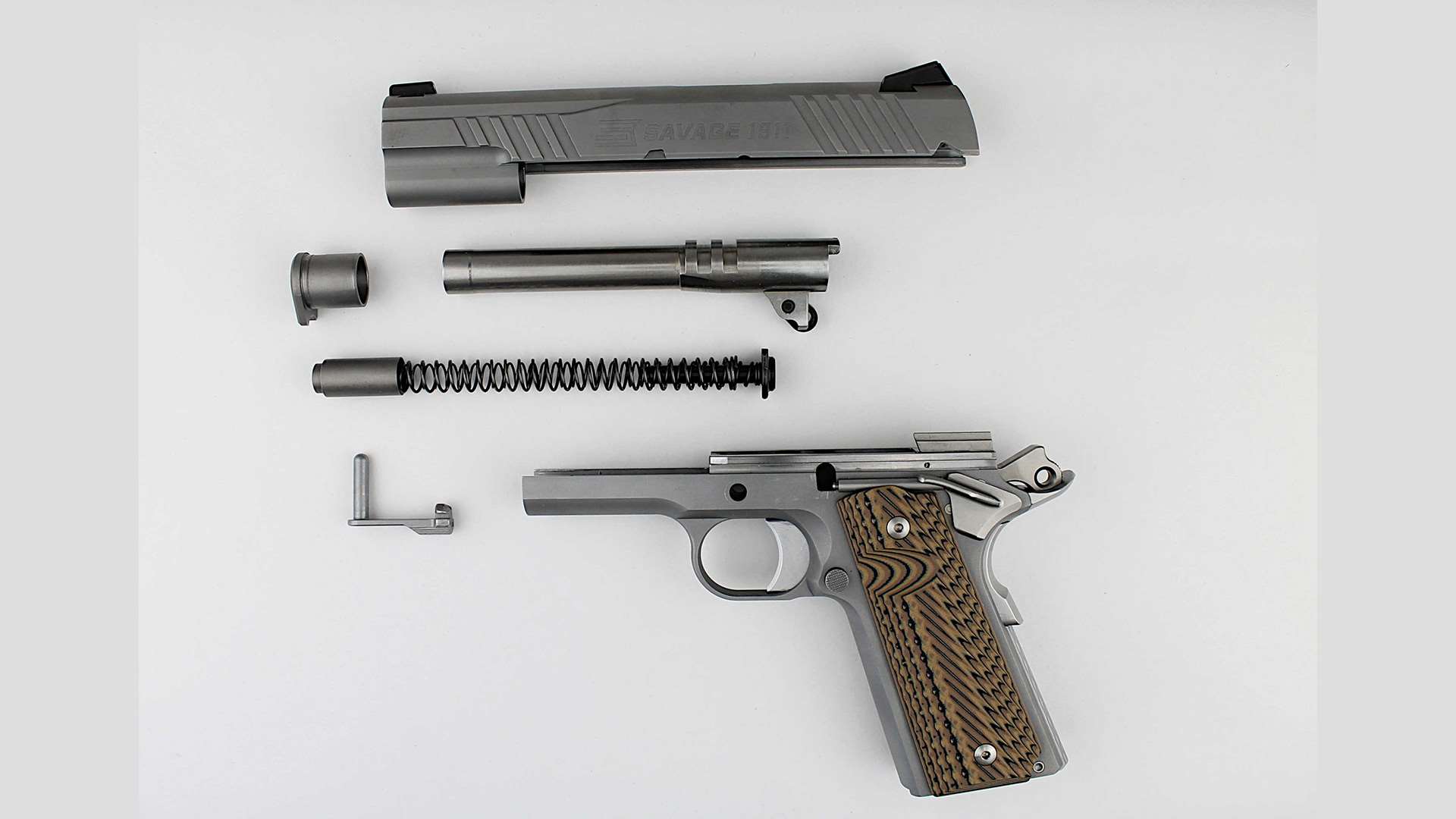
Those improvements have been routinely applied to production Model 1911s for decades now—so much so that there is a recent “nostalgia market” in the pistols that reproduce the appearance and function of the original military incarnation. However, improvements over the original such as a beavertail grip safety, larger sights and ambidextrous controls are popular because they enhance the Model 1911’s performance, so manufacturers include them on pistols intended for serious self-defense work.
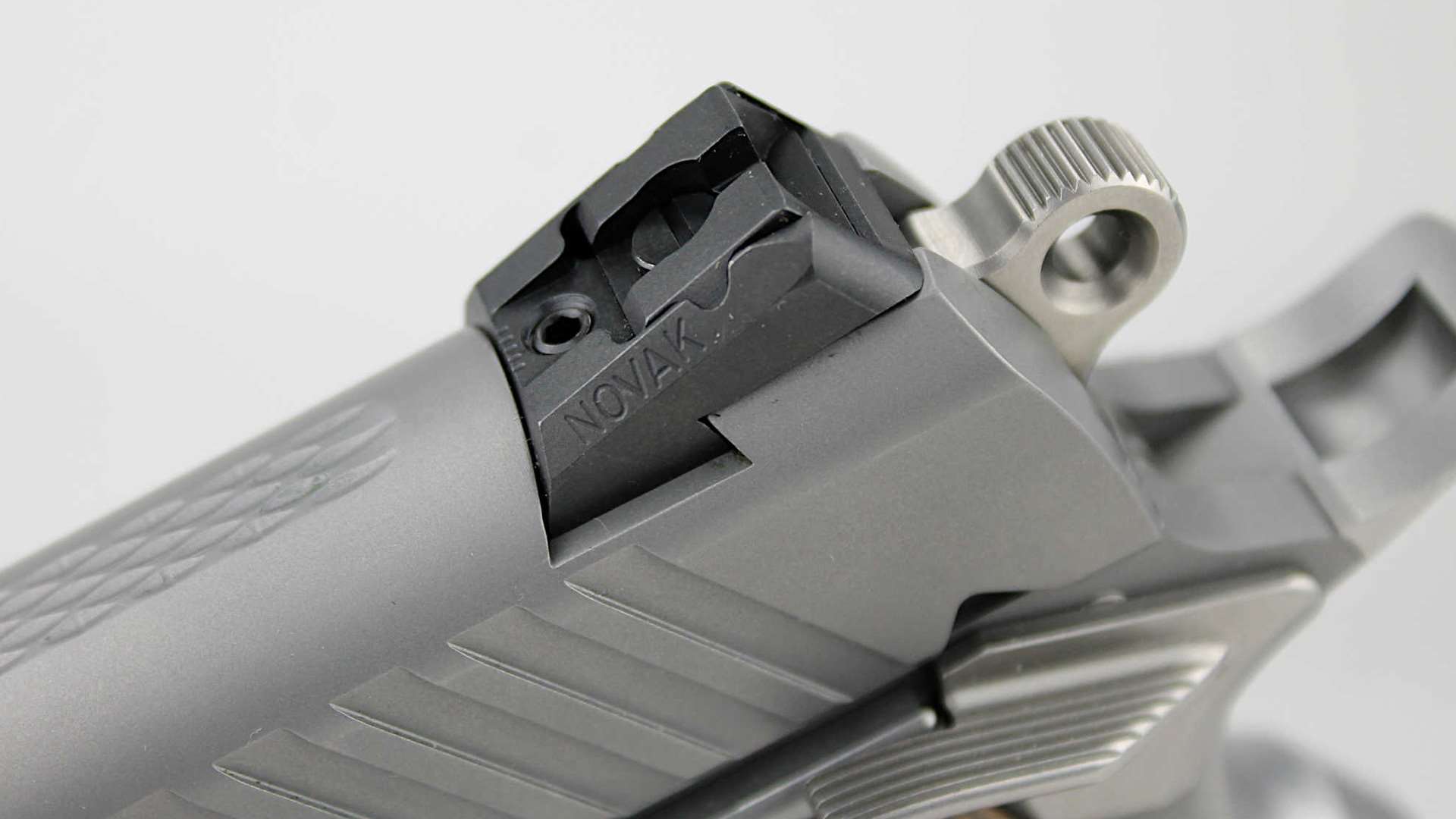
Evaluated here is Savage’s 1911 GOVT Style Stainless, the stainless frame and slide bearing a matte gray finish. Like the original Government model, it has a five-inch barrel, but unlike the USGI M1911, Savage machined the barrel from billet, finished it to a high polish and terminated the muzzle in an 11-degree target crown. The back of the barrel hood has a tiny witness hole for a visual check of the chamber. The hole is necessarily tiny for obvious reasons—too tiny for my eyesight—and so the slide sports serrations on the front to provide positive grip to ease the slide back a fraction of an inch for a “press check” of the chamber condition.
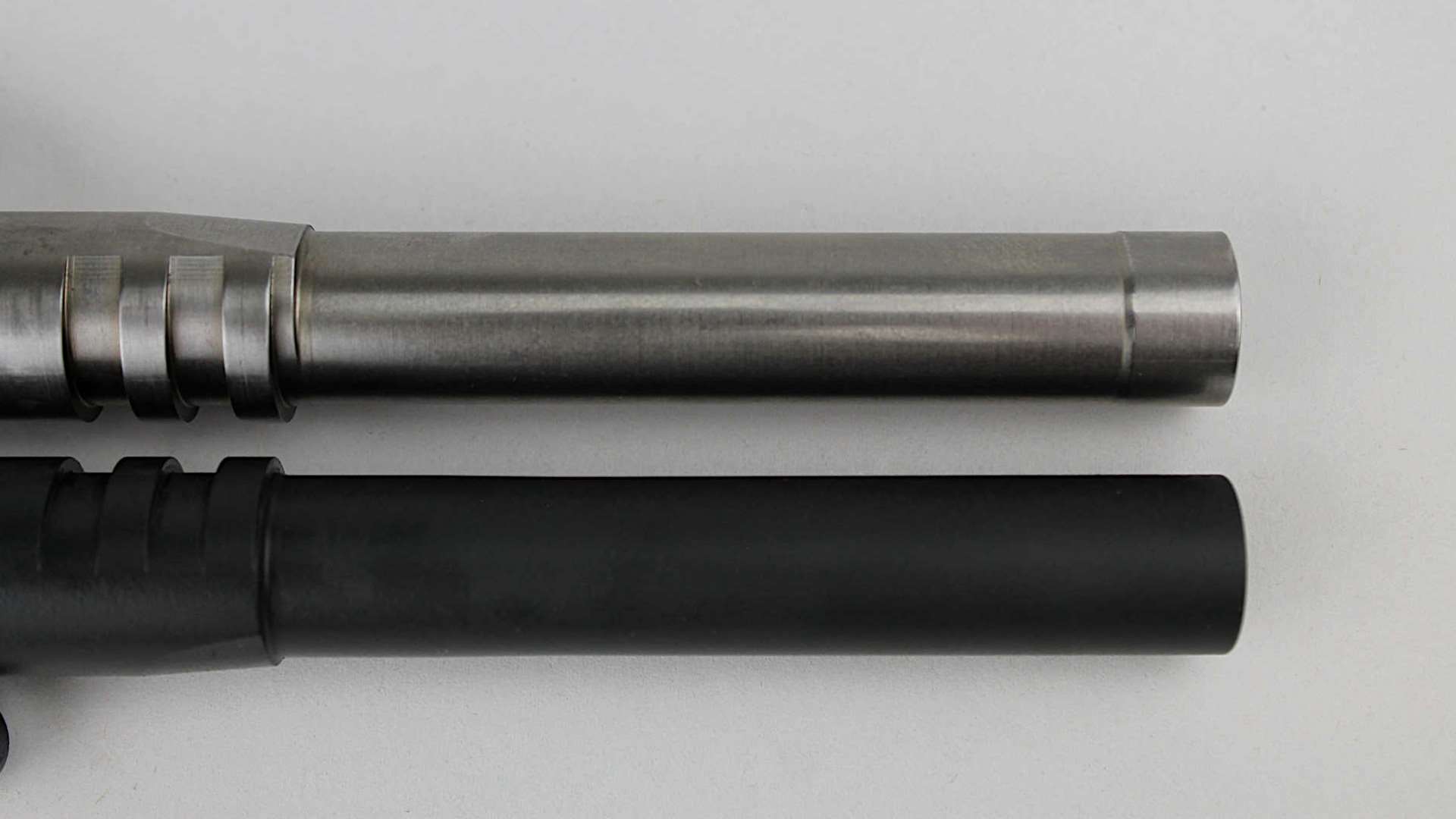
TIGHT FIT
Savage cut a lowered and flared ejection port in the slide that enhances ejection of a loaded round. Slide-to-frame fit is superb, with no visible gap in the rails. There is absolutely no movement when twisting the slide side-to-side, even with the slide fully retracted. While impressive, more important to accuracy is the fit of the barrel bushing to barrel and slide, and the fit of the barrel’s upper and lower locking lugs. The barrel circumference is visibly oversize at the muzzle, and the bushing appears to have only enough play to allow the barrel to tip downward to unlock. The bushing fits so tightly to the slide that, unlike on many USGI M1911s, a bushing wrench is necessary to remove and reinstall it. Field-stripped with the barrel lying in place in the slide, there is no perceptible fore-and-aft movement, indicating a close width tolerance between upper lugs and slide.
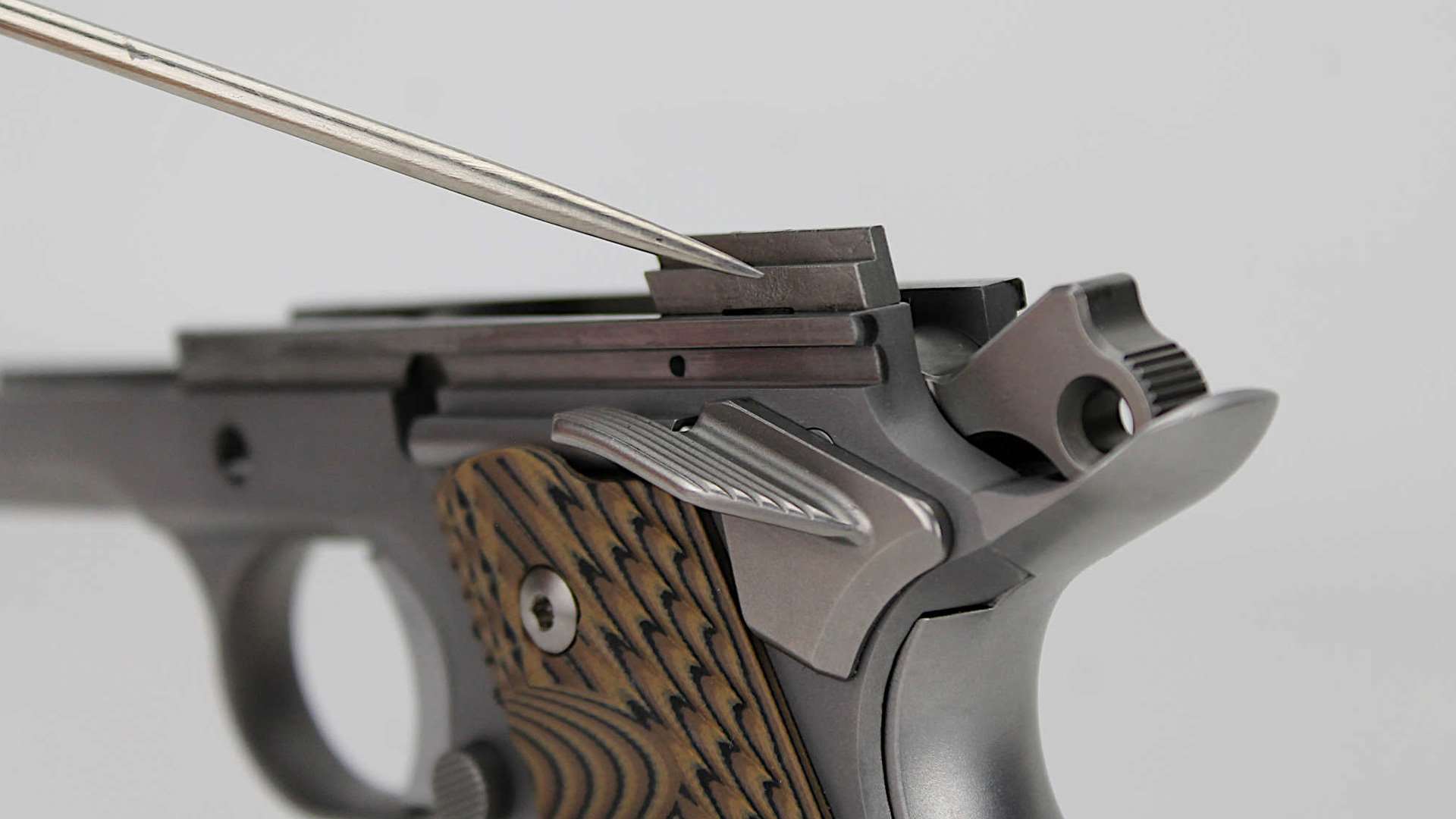
DOVETAIL SIGHTS
Savage elected to install a “no-snag” low profile Novak rear sight, which has an elevation screw for adjustment; drifting the sight in the dovetail adjusts windage. There are no white dots or outlines on the rear sight, though the front sight sports a white dot. The front sight is dovetailed in, which makes changing to some other preferred sight much easier than on USGI and many other Model 1911s, which have front sights staked in. The top of the slide wears aesthetic scalloping as a glare reduction measure.
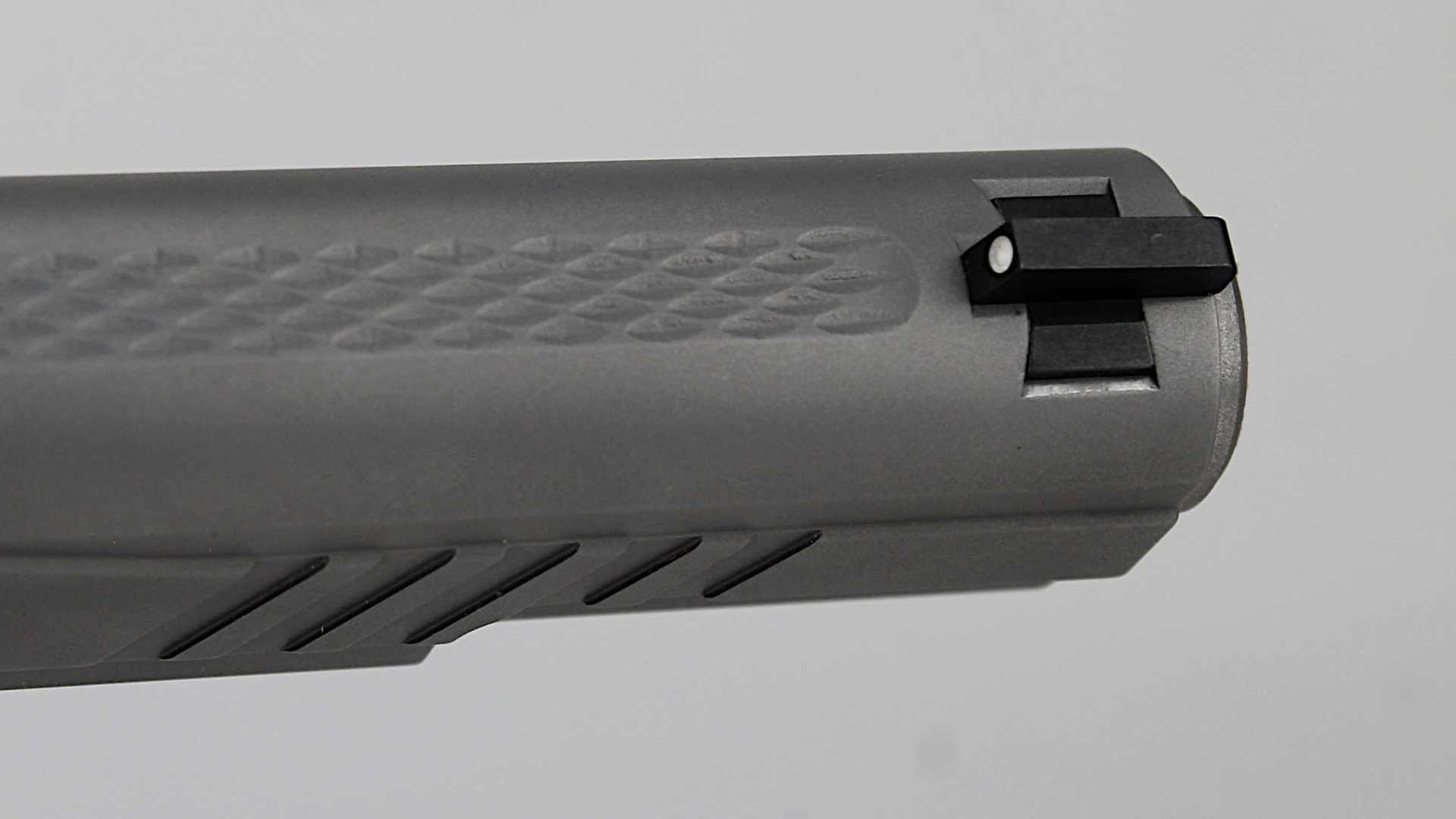
Slide stop and magazine release are standard-issue size; the ambidextrous thumb safeties are slightly oversize for more positive disengagement. A palm pad on the beavertail grip safety aids in reliably depressing it. The scalloping on the slide top reappears on the flat mainspring housing.
Grip panels are a hard synthetic “G10” laminate material in a color Savage calls, “Hyena Brown.” The sculpting results in minute sharp serrations providing excellent grip that feels superior to standard checkered grips. A scallop in the left grip aids the right thumb in acquiring the magazine release.
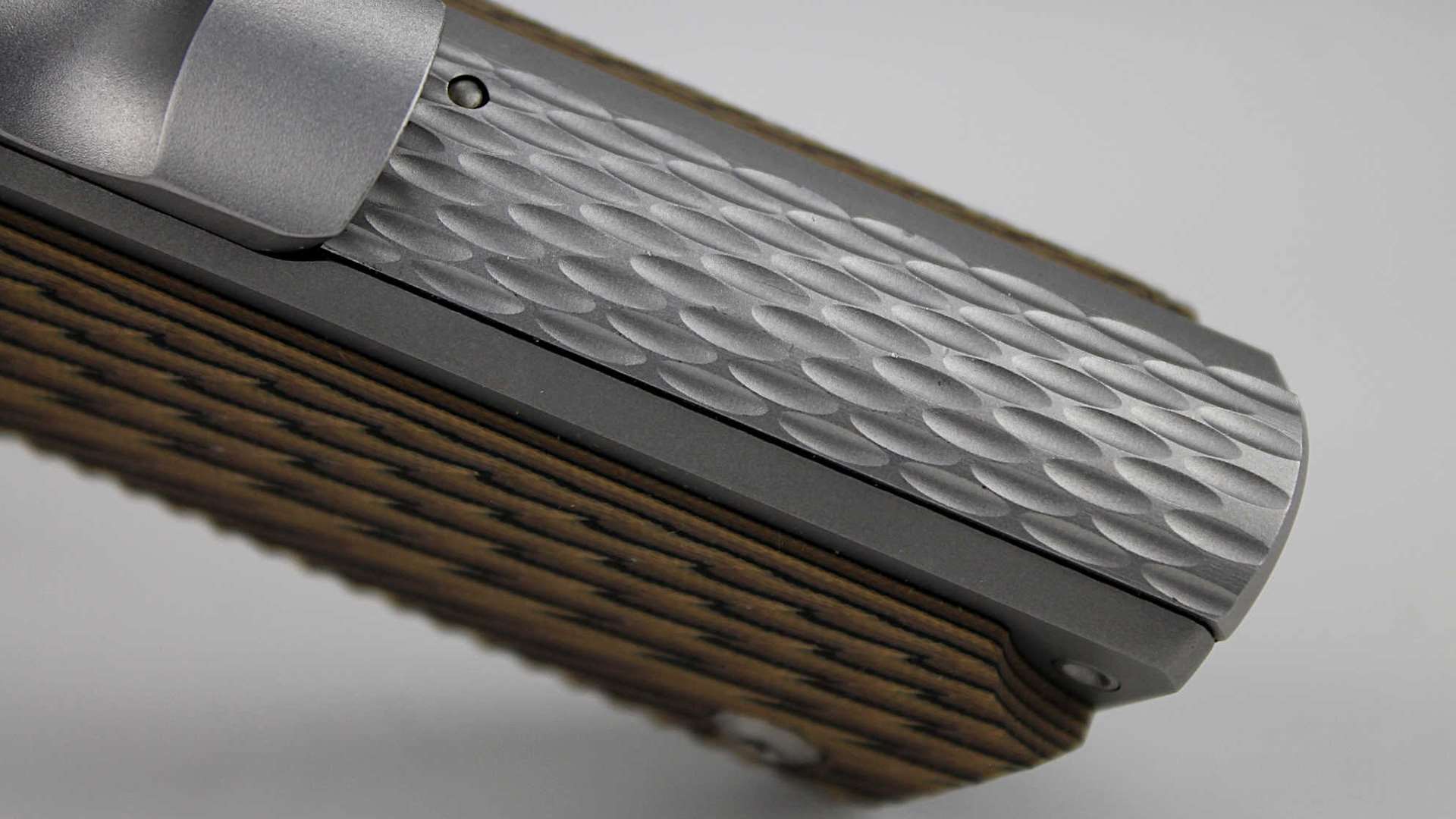
Two eight-round stainless magazines accompanied the pistol from the factory, each with plastic bumpers installed. Followers are flat-topped steel. Magazine ejection is positive, magazines falling completely clear even with the slide retracted, as they should on a combat pistol. There is no magazine disconnect safety, as there shouldn’t be on a combat pistol.
SUPERIOR TRIGGER
Part of what makes the Model 1911 superior to striker-fired polymer guns is its single-action trigger. The Savage’s trigger breaks at four pounds, 4.3 ounces, as measured with a Lyman electronic trigger pull gauge, after the initial short first-stage take-up. It has virtually no creep or overtravel. No doubt the excellent trigger function is partially due to Savage making the sear and disconnector of machined tool steel. The trigger is apparently aluminum or an alloy. The trigger, grip panels, grip screws and magazine bumpers are the only parts on the Savage 1911 that don’t draw a magnet.
Field stripping Savage’s 1911 is identical to the USGI pistol. The only visible internal difference is the second recoil spring that rides inside the outer spring. The inner spring affixes firmly to the guide rod; the outer spring fits snugly to the recoil spring plug.
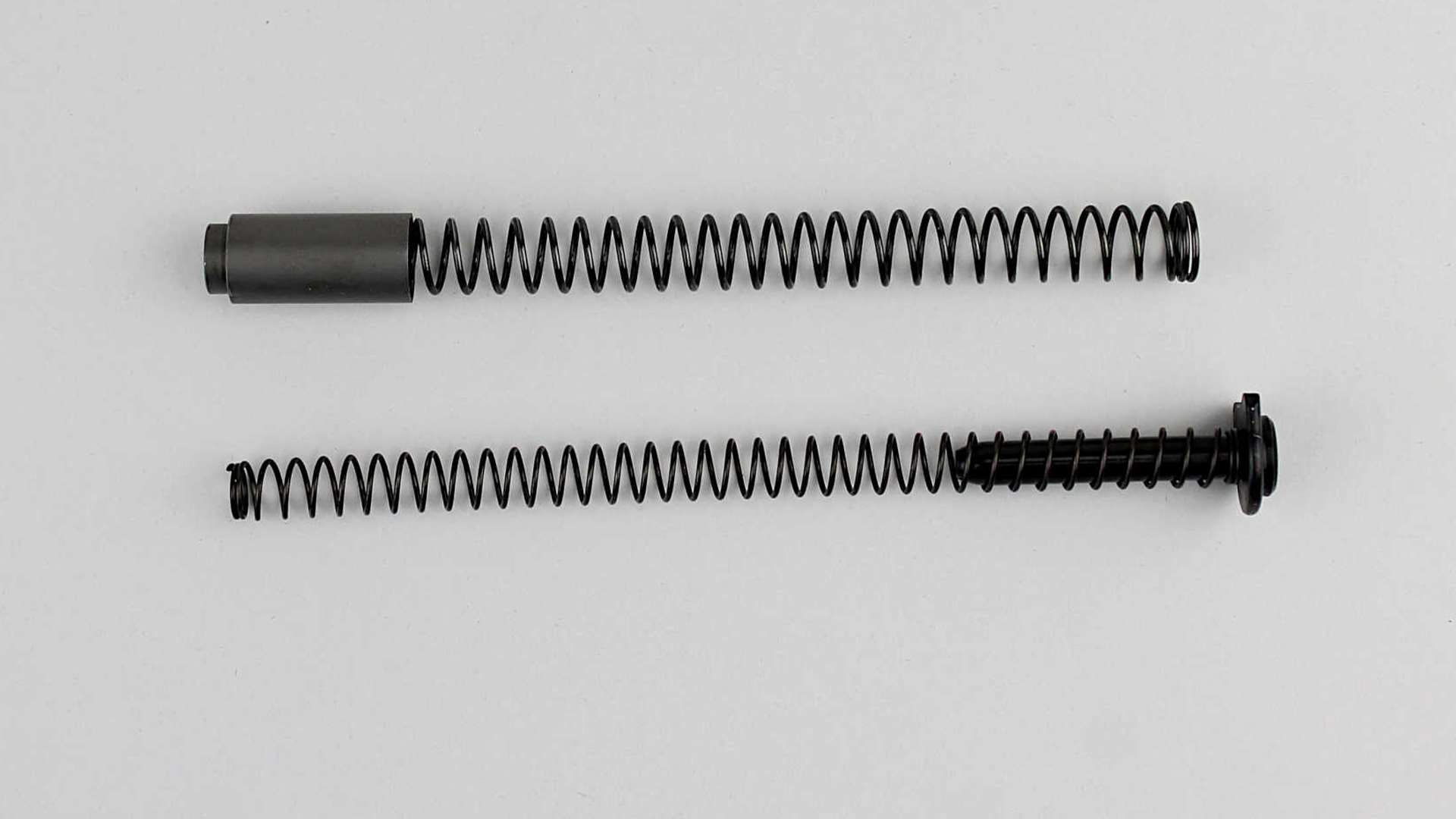
FUNCTIONAL AND ACCURACY TESTING
Since Day One, the 230-grain full-metal jacket bullet has been the diet staple of the Model 1911 (though 9 mm and .38 Super have also been popular chamberings, as well), and the Savage digested both military ball and commercial Federal, Hornady, PMC, Remington FMJ and hollow-point ammunition without a hiccup, except for a single stoppage. After perhaps 50 rounds, the slide failed to return to battery, sticking about a half-inch short and declining to respond to a tap-rack drill. Long story short, the hangup was due to a lack of lubricant; the fit of the slide is so tight that it requires a drop of lubricant on the left side of the ejector where the slide bears against it, as well as the usual lube on the rails. The owner’s manual instructs the buyer to remove the preservative oil and shows where to apply lubricating oil on the rails and barrel. The tight fit of this specific pistol requires the extra lube, as noted.
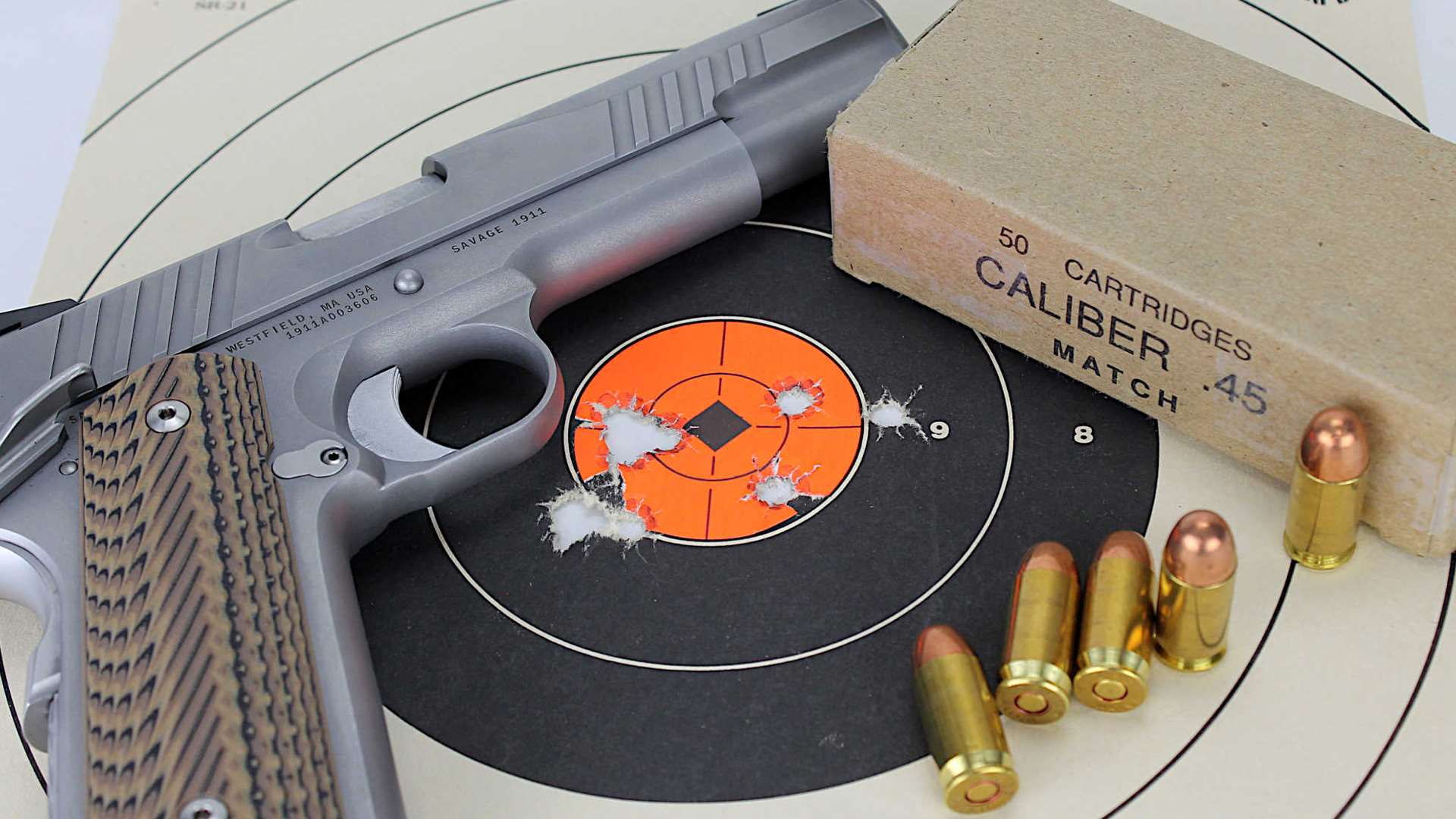
At combat distance, the Savage shot exactly to point-of-hold, landing 230-grain factory loads into two- to three-inch groups from offhand. The heft of the steel pistol helped tame recoil for a pleasant session of double-tap and failsafe drills. Milsurp match-grade ball ammo made a satisfying slow-fire cluster in the center of the target. Curious to see the working latitude of the dual recoil springs compared to the usual single spring, I fired a light target load, 4.8 grains of W231 under a 200-grain lead semi-wadcutter bullet, in the pistol. The handload lacked the impetus to fully cycle the slide for positive ejection, which is no fault of the pistol as, again, the load is exceptionally light.
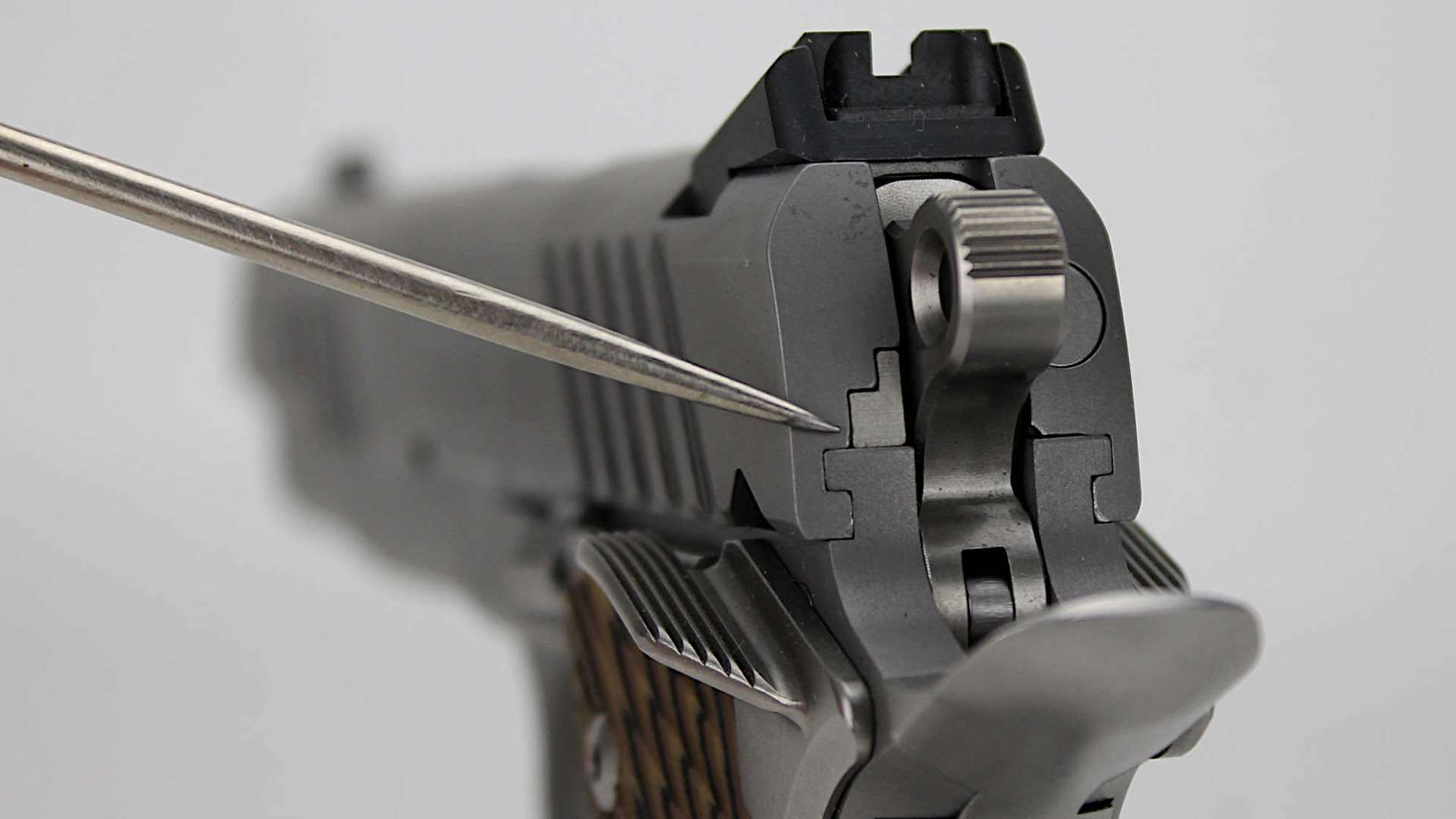
Whether irony, karma or just “what goes around comes around,” it’s interesting to note that the War Department declined Savage’s pistol entry in the 1907 U.S. Army trials, selecting instead what became the Colt Model 1911 pistol. Savage soon dropped out of pistol making, and after a century-long hiatus, has recently re-entered the handgun market with an enhanced Model 1911 after—of course—first introducing a polymer 9 mm pistol, the Stance. The decision is unsurprising from a business aspect. But while it’s a plethora of polymer 9s that communally share top billing in popularity, the iconic Model 1911 still stands alone on its own merits after a century of reliable service.
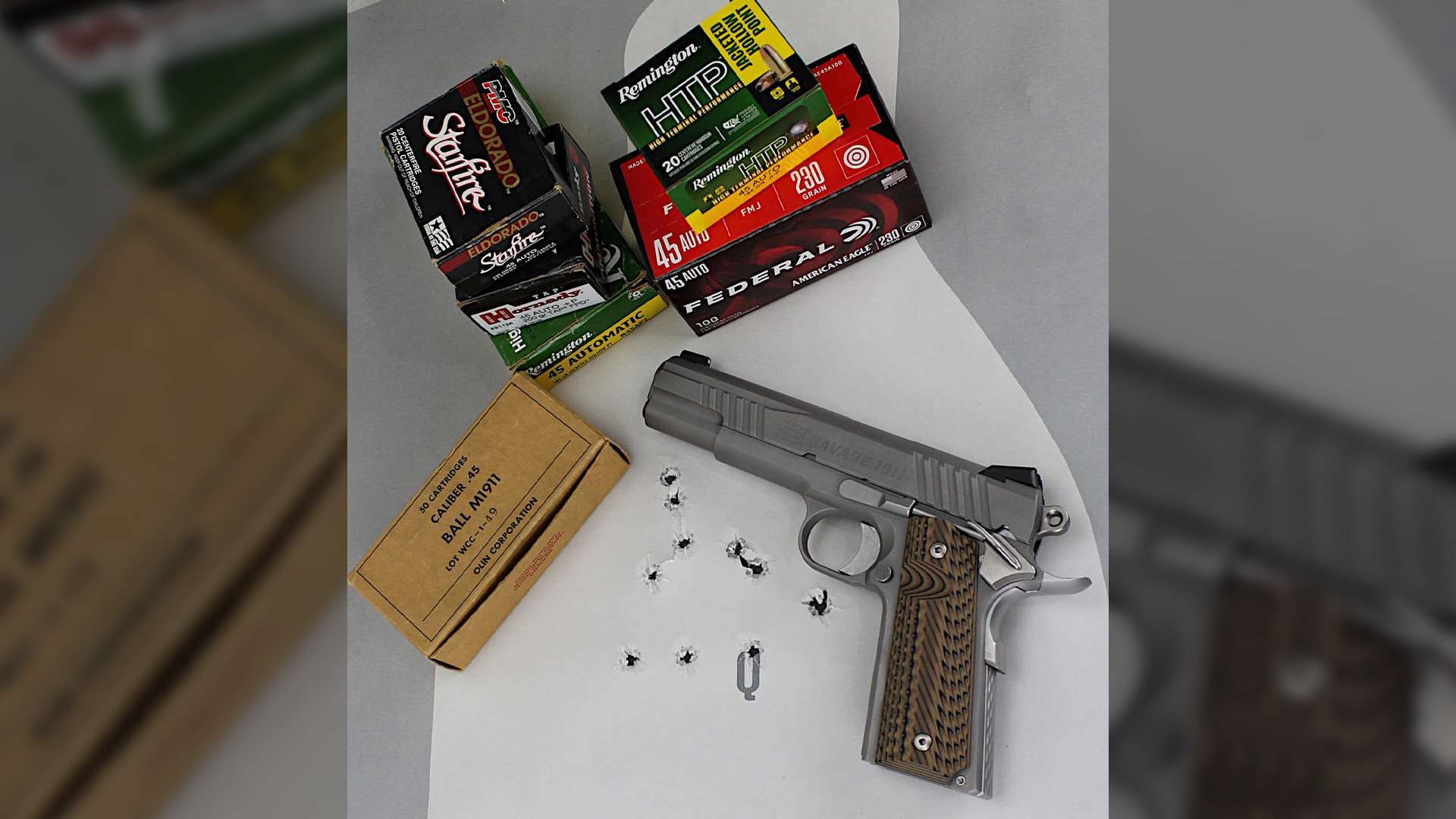
Savage offers several versions of its Model 1911, including two with Picatinny rails on the dust cover for a light or laser. MSRP starts at $1,349. For more information, visit the Savage Arms website.













